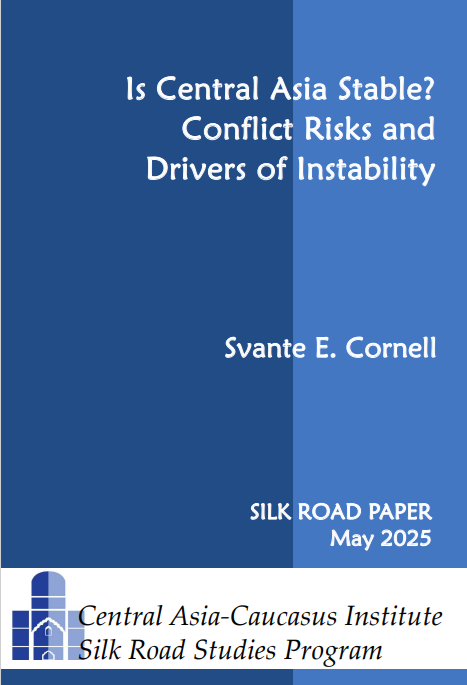By Svante E. Cornell
Central Asia-Caucasus Institute & Silk Road Studies Program
Silk Road Paper
May 2025
Executive Summary

In 2022, violence erupted in four different areas of Central Asia. These episodes of violence were very different from each other, and all were contained within days or weeks. The region has seen little violence since. Yet their occurrence during a single year raised the question whether Central Asia is actually more prone to instability than a cursory overview would suggest.
The episodes of violence in 2022 were varied: one was a conflict over territory between two states, while the other three were internal conflicts, featuring struggles over power and complex center-periphery relations.
In Kazakhstan, demonstrations erupted in January 2022 but were hijacked by forces that sought to implement a coup attempt against the government, making the violence an issue over control over the country’s government. Uzbekistan and Tajikistan both saw violence that featured an element of separatist sentiments and a struggle between center and periphery. In Tajikistan’s Pamiri-populated Gorno-Badakhshan region, the government violently sought to stomp out influential local powerbrokers. In Uzbekistan’s Karakalpakstan republic, a government bid to reduce local autonomy triggered violent protests. In the case of Kyrgyzstan and Tajikistan, inter-state tensions over a contested border triggered the most deadly episode since tensions between Kyrgyzstan and Tajikistan had begun to rise in 2020.
A series of potential factors impact the risk of renewed instability in Central Asia. Internal to the region, these include the economic difficulties the region has experienced in the past decade. In addition, the remarkable resistance to reform that post-Soviet institutions in the region have shown in the past three decades has become increasingly unsustainable in the face of new communication technologies and an emerging post-Soviet generation. Among state institutions, the region’s security services can be identified as the most unreformed and retrograde power centers, and they played influential roles in most of the episodes of violence in the region.
Aggravating these risk factors are the growing disparity between states of the region and the continued malign role of Russian influence, whose array of instruments to undermine stability have only intermittently been deployed across Central Asia.
These risk factors are mitigated by the constructive efforts toward greater regional cooperation in Central Asia, which provide a window into a future where Central Asia is more integrated and able to withstand external pressure, all while internal reform efforts provide greater opportunities for economic development and accountable government.


